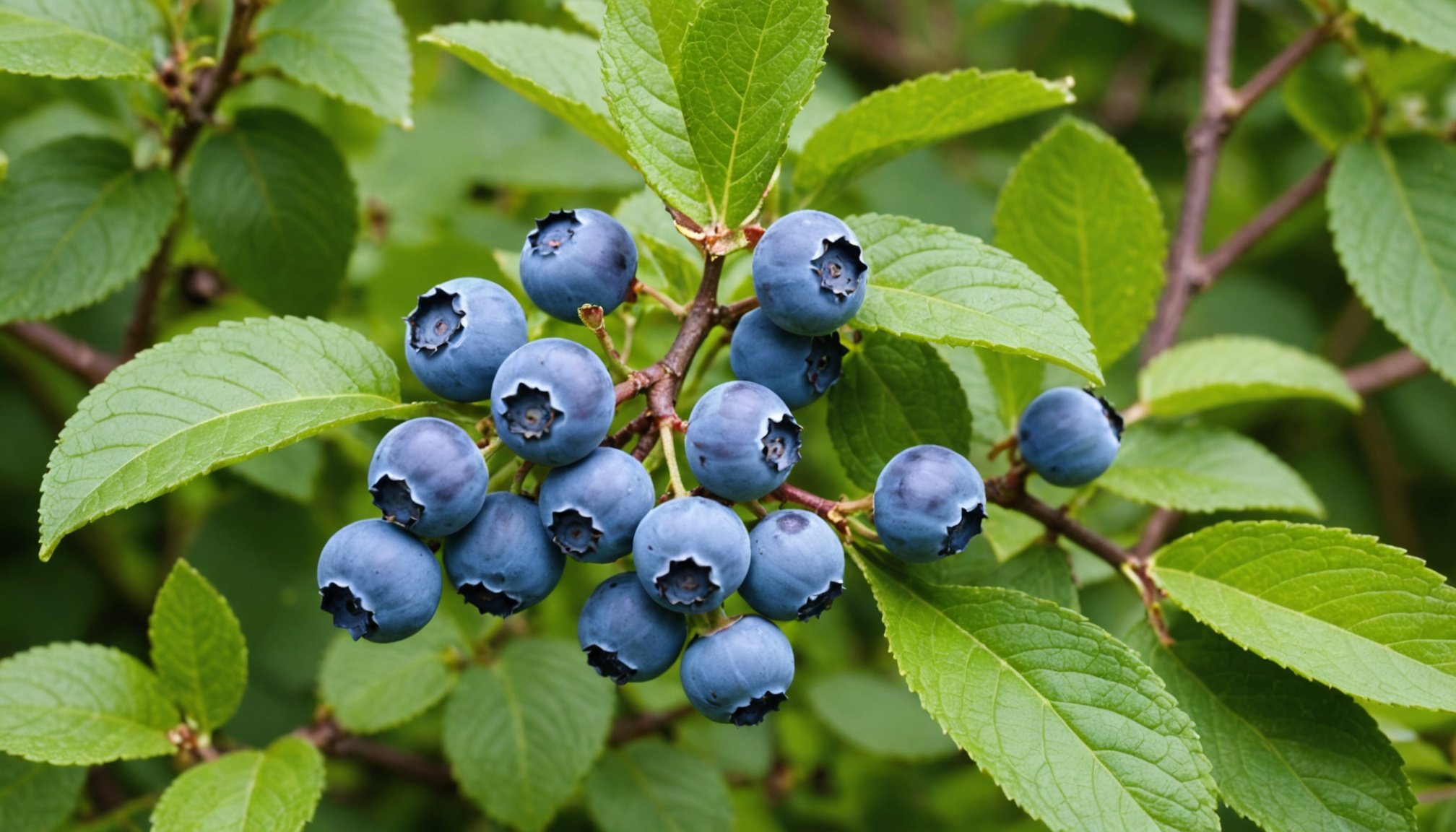Soil Preparation Techniques
Understanding the complexities of soil preparation is crucial for successful blueberry cultivation. The pH level of the soil determines how well blueberries can absorb necessary nutrients. Ideally, a soil pH between 4.5 and 5.5 is optimal for blueberries. To determine the current pH level, a soil test kit can be employed, which is a straightforward solution available at most garden centres.
Once the pH is assessed, amending the acidic soil becomes essential if the range is not within optimal limits. Organic materials such as peat moss or pine needles can naturally increase soil acidity. Moreover, elemental sulfur can be added to effectively lower the pH over time. These amendments should be carefully mixed into the top layers of soil to create an ideal planting environment.
Have you seen this : Ultimate guide to thriving uk orchids: key strategies for cultivating a vibrant collection
For those cultivating in regions with naturally high pH soils, creating raised beds with pre-mixed acidic soil could be advantageous. This approach not only provides the preferred acidic conditions but also enhances drainage, another key aspect of successful blueberry growth. With strategic soil preparation, blueberries can flourish amidst the UK’s variable climate. The correct preparation can lead to robust plants, ready to yield bountiful harvests.
Nutrient Management for Blueberries
The success of blueberry cultivation hinges on effective nutrient management. Blueberries thrive on a combination of essential nutrients, with nitrogen, phosphorus, and potassium being the most crucial for their growth. Magnesium, calcium, and sulfur also play vital roles, enhancing overall health.
Also to see : Mastering perennial vegetables: essential growing strategies for flourishing gardens in the uk
Understanding the specific needs of blueberries is key. They are particularly vulnerable to iron deficiency in non-acidic soil, which is why maintaining appropriate pH and nutrient levels is essential. To address nutrient requirements, choose fertilizers specially formulated for acidic soil and rich in ammoniacal nitrogen. These mixtures help maintain soil conditions conducive to optimal plant health.
Timing and methods for fertilization must be carefully planned. Applying fertilizers in spring or early summer ensures nutrients are available during peak growth periods. Broadcasting the fertilizer evenly around the plant’s drip line or incorporating it into the soil are effective techniques to ensure absorption.
Regular soil testing can guide adjustments in nutrient applications, driving healthy development. With meticulous planning and correct fertilization practices, blueberries can realize their full potential, contributing to bountiful harvests and ensuring a sustainable planting environment.
Effective Watering Techniques
Proper watering techniques are vital for successful blueberry cultivation. Blueberries require consistent moisture, particularly since they grow best in acidic soil, which can impact how water is retained and absorbed. Reliable moisture management is essential, as both over-watering and under-watering can stress the plants and affect yield.
The best practice is to water deeply but infrequently, ensuring the water reaches the root zone, which promotes robust root growth. Drip irrigation systems are ideal as they provide controlled moisture and conserve water. Early morning watering minimizes evaporation and maximizes uptake by the plants.
Utilizing mulch can significantly aid in moisture management. Organic mulch such as bark or pine needles helps retain moisture in the soil, reduces temperature fluctuations, and suppresses weed growth. It also slowly adds to soil acidity as it breaks down, complementing the environment blueberries thrive in.
Regularly checking the soil moisture level is crucial, especially during dry spells. A moisture meter can provide precise readings, ensuring you adjust your watering regime as needed. By adopting these effective watering techniques, you can foster an environment where blueberries can flourish, aligning with their specific moisture needs.
Pest Control Strategies
Blueberry bushes, cherished for their delicious fruits, often fall prey to various pests that can jeopardise blueberry cultivation. Understanding the most common pests, such as aphids, fruit flies, and caterpillars, is the first step in effective pest control.
To manage these threats, adopting integrated pest management (IPM) techniques is highly recommended. IPM combines multiple strategies that minimise damage while reducing pesticide use. Start by monitoring plants regularly for signs of insects or damage. Early identification is crucial for timely intervention.
Emphasising organic methods can be beneficial. Beneficial insects like ladybugs and lacewings can naturally reduce pest populations. Additionally, introducing predatory nematodes helps control soil-dwelling larvae. Organic insecticides, such as neem oil, offer a less invasive solution that targets pests without harming beneficial organisms.
Barriers and traps can also play a role in safeguarding fruits. Using floating row covers can deter pests physically, while pheromone traps can lure and capture insects like fruit flies.
These organic pest control solutions not only protect your blueberries but maintain ecological balance. Through vigilance and proactive strategies, it’s possible to sustain healthy bushes and enjoy bountiful, high-quality harvests.
Choosing Suitable Blueberry Varieties
Selecting the right blueberry varieties is pivotal for successful cultivation, especially in regions with acidic UK soil. Certain varieties are more compatible with the unique climate and environmental conditions. Key factors to consider include growth season length, disease resistance, and cold hardiness, ensuring the berries can thrive despite variable UK conditions.
Highbush blueberries such as ‘Bluecrop’ and ‘Duke’ are popular choices for the UK climate due to their robustness and adaptability to cooler temperatures. These varieties also bring a high yield potential and boast sweet, sizeable berries. Additionally, the ‘Patriot’ variety is renowned for its outstanding adaptability to a range of soil types and its ability to produce fruit even in less than ideal soil conditions.
When selecting blueberry cultivars, taste preferences can guide your choice. Cultivars like ‘Chandler’ offer a unique, tangy flavour profile that differs from the traditional sweetness of ‘Duke’. Each variety presents different harvest times, allowing for a more extended picking period. This diversity not only maximizes yield but also enhances the overall berry-consuming experience.
In conclusion, understanding the distinctions between hardy blueberry varieties aids in making informed decisions tailored to personal preferences and specific garden conditions.
Local Climate Considerations
Understanding the UK climate is essential for successful blueberry cultivation. The variable growing conditions and frequent weather shifts can significantly impact blueberry plants. With cooler temperatures prevalent, selecting blueberry varieties that thrive in these circumstances becomes crucial.
Seasonal variations, especially in spring and autumn, can influence blueberry growth by affecting flowering and fruiting periods. These temperature impacts necessitate adaptation strategies to optimise growth. Implementing protective measures like frost covers or row covers can shield young plants from unexpected cold snaps while ensuring optimal conditions for fruit development.
Microclimates in certain areas of the UK may offer advantages or challenges. For instance, southern regions might enjoy milder winters, promoting more consistent growth. Conversely, northern areas may experience harsher winters, requiring hardier cultivars and protective measures.
To mitigate climatic impacts, selecting hardy blueberry varieties tailored to local conditions is recommended. These can withstand the UK’s diverse climate, optimising growth despite challenges. Monitoring local temperature forecasts and adjusting garden practices ensures resilience. By understanding these local climate considerations, gardeners can align cultivation practices with environmental conditions, fostering a thriving blueberry crop.
Challenges and Solutions in Blueberry Growth
Cultivating blueberries often involves navigating several common challenges. Identifying these issues is crucial for effective problem-solving. One prevalent issue is improper soil pH, which can hinder nutrient absorption. Adjusting soil acidity through regular pH testing and appropriate amendments is essential. Runoff from surrounding areas may alter pH levels, so preventive measures can save time and effort.
Environmental challenges, such as unexpected weather changes, also impact blueberry growth. Extreme temperatures may damage plants, stressing the importance of frost covers and strategic planting locations. These tactics are invaluable for protecting plants from potential frost damage and allowing optimal development.
Blueberries can suffer from poor pollination, leading to reduced yields. Encouraging beneficial insects by planting nearby flowering plants can improve pollination rates. Additionally, employing troubleshooting strategies—like analysing irrigation systems to ensure even water distribution—enhances plant resilience.
Maximizing yields amidst these challenges involves adopting adaptive cultivation practices, tailored to individual growing conditions. Recognising and addressing these problems proactively paves the way for a fruitful harvest. Exploring innovative techniques can help overcome obstacles, bringing both satisfaction and successful blueberry production despite hurdles.



